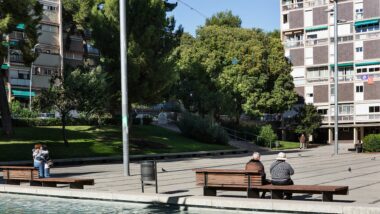New Neighbourhood Plan to reach over 400,000 people in 27 neighbourhoods
The third Neighbourhood Plan (2025-2028) will see 315 measures and projects rolled out in seven city districts over the next three years. The goal is to continue reducing inequalities between different parts of the city. With a special budget of 300 million euros, the most ambitious edition of this initiative to date will reach 27 neighbourhoods, directly benefitting nearly 440,000 people.Most projects have now been defined for the third edition of the Neighbourhood Plan to improve the material conditions of the most vulnerable areas and strengthen territorial equity in the city as a whole. These actions are designed with members of the public heavily involved to respond to the needs of each territory.
The new Neighbourhood Plan places special emphasis on four priority profiles: teenagers, the elderly, women and migrants, as vulnerability can be greater among these, meaning they need extra support.
Despite their cross-cutting nature, the three priority areas are education and culture, public space and accessibility, and housing and renovation. Work will also be conducted on health, employment, urban greenery and more. Projects that have produced good results in previous editions will be consolidated and specific measures will be included in territories undergoing transformation, such as the neighbourhood of La Marina, and in mountain neighbourhoods (Les Planes, Sant Genís dels Agudells, Montbau and La Teixonera) to improve public space, accessibility and the reduction of inequalities resulting from their complex geography.
Improvement of public space and facilities
In all, 158 million euros will be invested in over a hundred projects to improve public space and facilities in the city. In most cases these projects will be to improve public space and make it more accessible, plus investment in schools and community facilities and adapting public space to the climate, promoting parks and increasing urban greenery. All the libraries in the Neighbourhood Plan will open in August and at Christmas to promote the availability of cultural spaces and climate shelters.
The assessment of the first two editions of the Neighbourhood Plan offers an insight into the positive impact of this initiative. For instance, in neighbourhoods included in the plan, school drop-out rates have been reduced by twice as much compared to the rest of the neighbourhoods in the city. In addition, there has been a reduction in urban vulnerability and an improvement in conditions in the neighbourhoods in question.



















